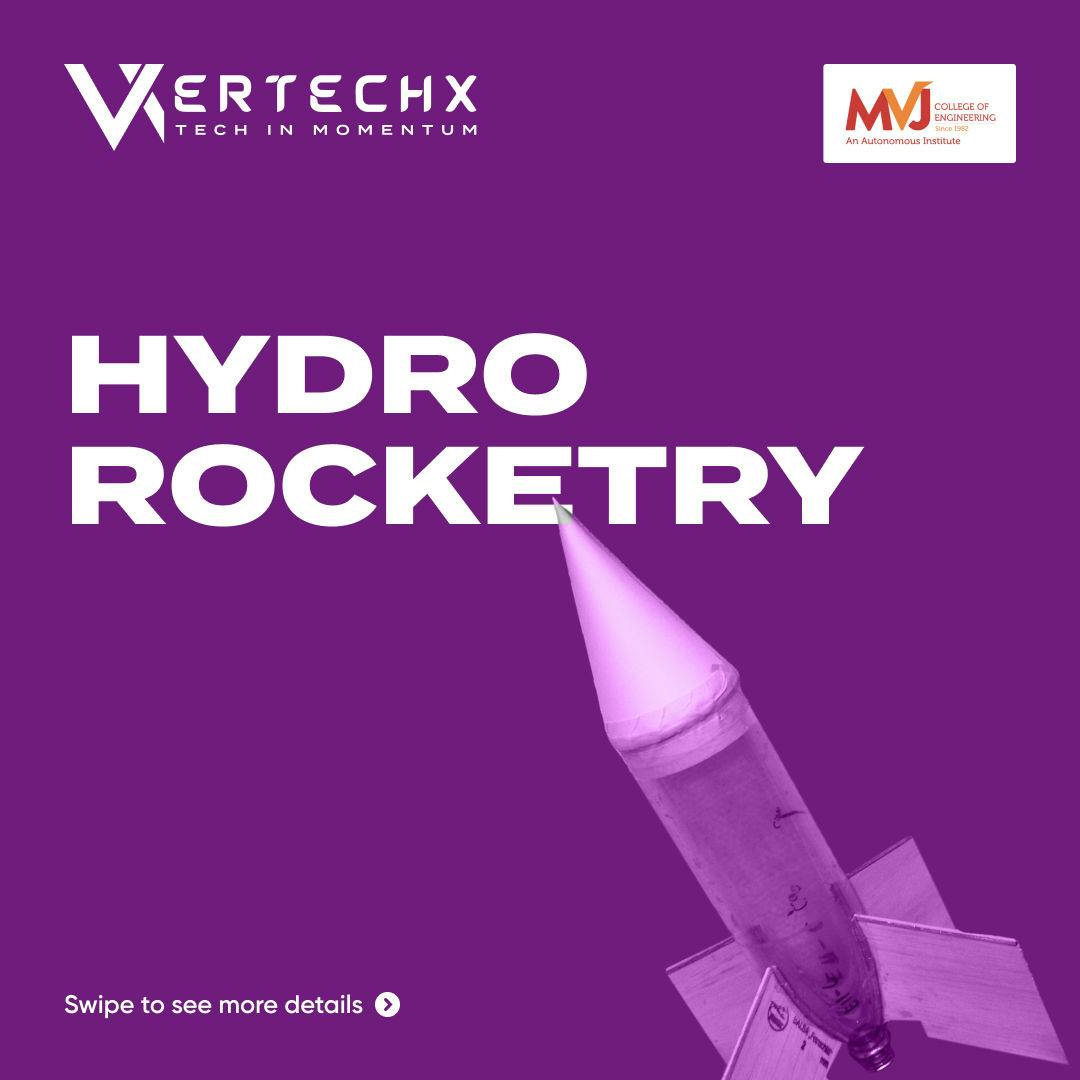
HYDRO ROCKETRY
Aeronautical & Aerospace
The team must design their own water rocket (minimum 2) and launch pads with safety. The following specifications and rules address many well-known safety issues of water rockets but are not expected to cover all design possibilities. The team should give thought to their designs and use common sense and be aware that the inspection team will inspect and assess rockets for compliance with the safety requirements on the day of the competition. The rocket must be designed for stable flight, that is, it must have stabilizing fins in the rear of sufficient size to place the Center of Drag (COD) behind the Center of Mass (COM), also called the Center of Gravity (COG). One way to test stability is to swing the empty rocket (with fuel tank empty) around in a circle using a string tied to the rocket's COM. If the rocket is aerodynamically stable, it will automatically orient itself nose-first in its motion. The stabilizing fins must be firmly attached to the rocket and must not have sharp edges and tips. Only one round of competition will be there, where each team must designate rocket handlers, Air pressure pump handler and Captain.
Event Overview
General rules:
Designing:
1. Teams must assemble the rocket at the assigned venue. Pre-made rockets will not be permitted for launch.
2. The teams must carry all the essentials to fabricate the rocket, for instance, a bottle, suitable sheets for fins, paper blades, adhesives of use requisites for the nozzle, etc.(Note that all the items should be non-toxic)
3. The capacity of the bottle should vary between 1/2 to 2 liter.
4. There will be a time limit of 2 hours to assemble the rocket.
5. After assembly two tests will be conducted by the coordinators and volunteers.
6. The leak test is to check for any leakage from the rocket's body.
7. The pressure test, is that checks whether the needful pressure is developed within the rockets body.
Launching:
1. The rocket is to be designed for a secure launch at the ground, bearing in mind the safety of it's vicinity.
2. Pressure while pumping should not exceed 70 psi.
3. A metal launch pad will be provided.
4. Please keep note that the launch pad will not be fixed to the ground.
Event specification:
1. The performance of the rocket will be evaluated essentially by the range of their rocket's launch.
2. A 200*200m field will be provided for launch.
3. A fixed spot for the launching pad will be marked on the competition field.
4. The launch pad will be set at a 60-degree angle.
5. The candidates are to bring functional pumps to pressurize their rockets.
6. The maximum time for setup once called out for launching will be 10 minutes.
7. Each team will be given 2 attempts to launch their rockets.
Team requirement:
1. Each team can have a minimum 1 member and maximum of 2 members.
2. No candidate can be a member of more than one team.
3. Students from any stream can participate.